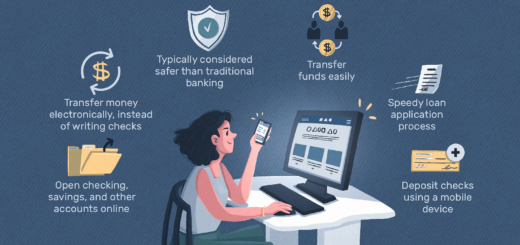Exploring the World of Cryptocurrency: A Beginners Guide
Are you curious about the fascinating world of cryptocurrency but don’t know where to start? Look no further! “Exploring the World of Cryptocurrency: A Beginners Guide” is here to help you navigate the exciting realm of digital currencies. From understanding the basics of blockchain technology to learning about popular cryptocurrencies like Bitcoin and Ethereum, this comprehensive guide will provide you with the knowledge and confidence to get started on your cryptocurrency journey. Whether you’re a novice or have some familiarity with the subject, this article is the perfect resource to expand your knowledge and uncover the mysteries of the crypto world. So, grab a cup of coffee, get comfortable, and let’s explore the world of cryptocurrency together!

What is Cryptocurrency?
Cryptocurrency is a digital or virtual form of currency that uses cryptography for secure financial transactions, control the creation of additional units, and verify the transfer of assets. Unlike traditional currencies issued by central banks, cryptocurrency operates on decentralized networks based on blockchain technology. This allows for transparent and secure transactions, making it an increasingly popular alternative to traditional financial systems.
Definition of cryptocurrency
Cryptocurrency can be defined as a decentralized form of digital currency that uses cryptography to secure transactions, control the creation of new units, and verify the transfer of assets. It operates on a technology called blockchain, which is a distributed ledger that records and verifies transactions across multiple computers, ensuring transparency and security.
History of cryptocurrency
The history of cryptocurrency can be traced back to 2009 when Bitcoin, the first cryptocurrency, was introduced by an anonymous person or group known as Satoshi Nakamoto. Bitcoin revolutionized the financial world and paved the way for the development of numerous other cryptocurrencies. Over the years, cryptocurrency has gained popularity and recognition as a viable form of digital currency.
How cryptocurrency works
Cryptocurrency works by utilizing decentralized networks and blockchain technology. When a cryptocurrency transaction is initiated, it is verified and recorded in a block on the blockchain. This block is then added to a chain of previous transactions, creating a secure and transparent ledger of all transactions. Cryptocurrencies are created through a process called mining, which involves solving complex mathematical problems to validate transactions and add them to the blockchain.
Types of Cryptocurrencies
Bitcoin (BTC)
Bitcoin is the first and most well-known cryptocurrency. It was introduced in 2009 and operates on a decentralized network, allowing for peer-to-peer transactions without the need for intermediaries. Bitcoin has gained widespread acceptance and recognition, becoming a popular investment option and a means of payment for goods and services.
Ethereum (ETH)
Ethereum is a decentralized platform that enables the creation of smart contracts and decentralized applications (DApps). It introduced the concept of programmable blockchain, allowing developers to build and deploy their own applications on the Ethereum network. Ethereum’s native cryptocurrency, Ether, is used to power these applications and facilitate transactions.
Litecoin (LTC)
Litecoin is a peer-to-peer cryptocurrency that was created in 2011 as a “lite” version of Bitcoin. It offers faster transaction confirmation times and a different hashing algorithm, making it more suitable for everyday transactions. Litecoin has gained popularity as a “silver” to Bitcoin’s “gold” and is often used for smaller transactions.
Ripple (XRP)
Ripple is both a digital payment protocol and a cryptocurrency. It aims to enable fast and low-cost international money transfers by utilizing blockchain technology. Ripple’s native currency, XRP, is used to facilitate transactions and improve liquidity.
Bitcoin Cash (BCH)
Bitcoin Cash is a cryptocurrency that is a result of a hard fork from the original Bitcoin in 2017. It aims to increase the block size limit, allowing for faster and cheaper transactions. Bitcoin Cash shares many similarities with Bitcoin but has its own separate blockchain.
Cardano (ADA)
Cardano is a blockchain platform that aims to provide a secure and scalable infrastructure for the development of decentralized applications, smart contracts, and digital assets. Its native cryptocurrency, ADA, is used for transactions and as a means of staking on the network.
Stellar (XLM)
Stellar is a blockchain-based platform designed for fast and low-cost cross-border transactions. It aims to connect financial institutions, payment systems, and individuals around the world, making it easier and more affordable to send money globally. Stellar’s native cryptocurrency, XLM, is used to facilitate transactions on the network.
Polkadot (DOT)
Polkadot is a multi-chain platform that allows for the transfer of any type of data or asset across different blockchains. It aims to improve the scalability, interoperability, and security of blockchain networks. Polkadot’s native cryptocurrency, DOT, is used for governance and bonding on the network.
Chainlink (LINK)
Chainlink is a decentralized oracle network that enables smart contracts to securely access real-world data and external APIs. It ensures the accuracy and integrity of data used by smart contracts, making them more reliable and useful. Chainlink’s native cryptocurrency, LINK, is used as a means of payment for data providers and node operators.
Binance Coin (BNB)
Binance Coin is the native cryptocurrency of the Binance exchange, one of the largest cryptocurrency exchanges in the world. It can be used to pay for trading fees, participate in token sales on the Binance Launchpad, and access other services offered by the Binance ecosystem.
Cryptocurrency Exchanges
What are cryptocurrency exchanges
Cryptocurrency exchanges are online platforms that allow users to buy, sell, and trade cryptocurrencies. They act as intermediaries, facilitating the exchange of cryptocurrencies for other digital assets or traditional fiat currencies. Cryptocurrency exchanges come in two main types: centralized exchanges and decentralized exchanges.
Centralized exchanges
Centralized exchanges are operated by a third party and act as intermediaries between buyers and sellers. They hold custody of users’ funds and facilitate trades on their platforms. Centralized exchanges offer a wide range of trading pairs and provide advanced trading features such as margin trading and futures contracts. However, they require users to trust the exchange with their funds and personal information.
Decentralized exchanges
Decentralized exchanges (DEXs) operate on blockchain networks and allow for peer-to-peer trading without intermediaries. They enable users to retain control over their funds, as trades are executed directly between users’ wallets. Decentralized exchanges provide greater privacy and security compared to centralized exchanges, but they may have lower liquidity and fewer trading options.
Popular cryptocurrency exchanges
Some popular cryptocurrency exchanges include Binance, Coinbase, Kraken, Bitfinex, and Huobi. These exchanges offer a wide range of cryptocurrencies for trading, have user-friendly interfaces, and provide robust security measures to protect users’ funds.
Getting Started with Cryptocurrency
Creating a digital wallet
To begin your journey with cryptocurrency, you would first need to create a digital wallet. A digital wallet is a software program that allows you to securely store, send, and receive cryptocurrencies. There are different types of wallets, including online wallets, software wallets, hardware wallets, and paper wallets. Each type has its own advantages and considerations, so it’s important to choose a wallet that suits your needs and provides a high level of security.
Securing your cryptocurrency
Securing your cryptocurrency is of utmost importance to prevent unauthorized access and potential loss of funds. It’s crucial to follow best practices such as enabling two-factor authentication (2FA), using strong and unique passwords, and keeping your wallet software and operating system up to date with the latest security patches. Additionally, storing your cryptocurrency in cold storage, such as a hardware wallet, can provide an extra layer of protection against online threats.
Understanding public and private keys
In cryptocurrency, public and private keys are used to secure and authenticate transactions. A public key is a unique identifier that allows others to send cryptocurrencies to your wallet, while a private key is a secret code that gives you access to your funds. It’s important to keep your private key secure and never share it with anyone. Losing your private key can result in permanent loss of access to your funds.
Buying your first cryptocurrency
Once you have set up your digital wallet and taken necessary security measures, you can proceed to buy your first cryptocurrency. Cryptocurrencies can be purchased on cryptocurrency exchanges using traditional fiat currencies or other cryptocurrencies. It’s important to research and choose a reputable exchange that offers the cryptocurrency you want to buy. You may also need to complete a verification process, depending on the exchange’s compliance requirements.

Mining and Blockchain Technology
What is mining
Mining is the process by which new cryptocurrency coins or tokens are created and transactions are verified on a blockchain network. Miners use computational power to solve complex mathematical problems, which adds new blocks to the blockchain and confirms the validity of transactions. In return for their efforts, miners are rewarded with newly minted cryptocurrency coins or tokens.
How mining works
Mining involves a network of computers, known as miners, that compete to solve mathematical problems. Miners combine their computational power and use specialized hardware to perform calculations in order to find the solution to these problems. The first miner to solve the problem and validate the transactions is rewarded with newly created cryptocurrency coins or tokens.
Proof of Work vs. Proof of Stake
Proof of Work (PoW) and Proof of Stake (PoS) are two consensus mechanisms used in blockchain networks. PoW requires miners to provide proof of solving computational problems, while PoS involves users “staking” their cryptocurrency as collateral to validate transactions. Both mechanisms have their advantages and considerations, and different cryptocurrencies may adopt different consensus mechanisms.
Explaining blockchain technology
Blockchain technology is the foundation on which cryptocurrencies operate. It is a decentralized and transparent ledger that records all transactions across a network of computers. Each transaction is verified by multiple computers, known as nodes, before being added to a block. Once a block is added, it cannot be altered, providing a secure and tamper-proof record of all transactions. Blockchain technology has the potential to revolutionize various industries by improving transparency, efficiency, and security.
Cryptocurrency Investment Strategies
Long-term investment
One common investment strategy in cryptocurrency is to hold onto your assets for the long term. This strategy, known as “HODLing,” involves buying cryptocurrencies and holding onto them for an extended period, regardless of short-term price fluctuations. Long-term investors believe in the potential growth of cryptocurrencies over time and aim to capitalize on their appreciation.
Day trading
Day trading involves buying and selling cryptocurrencies within a short time frame, typically within a day. Day traders aim to profit from the volatility of cryptocurrency prices by taking advantage of short-term price movements. This strategy requires active monitoring of the market and technical analysis to identify favorable trading opportunities.
Holding diversified portfolios
Another investment strategy is to hold a diversified portfolio of cryptocurrencies. Diversification helps to spread risk and reduce exposure to any single cryptocurrency. By investing in a variety of cryptocurrencies, you can potentially benefit from different market trends and minimize the impact of volatility in any individual cryptocurrency.
Researching and analyzing cryptocurrencies
Before investing in cryptocurrencies, it’s important to conduct thorough research and analysis. This includes studying the fundamentals of each cryptocurrency, such as its technology, team, and roadmap, as well as analyzing market trends and sentiment. By understanding the underlying factors that can affect the value of cryptocurrencies, you can make more informed investment decisions.
Risk management and setting goals
Investing in cryptocurrencies carries inherent risks due to their volatility and the unpredictable nature of the market. It’s important to establish clear investment goals and develop risk management strategies to protect your capital. This may involve setting stop-loss orders, diversifying your investments, and being mindful of the amount of capital you allocate to cryptocurrencies.
Understanding Cryptocurrency Wallets
Types of cryptocurrency wallets
There are several types of cryptocurrency wallets, each offering different levels of security and convenience. Software wallets are digital wallets that can be installed on your computer or smartphone, while hardware wallets are physical devices that store your private keys offline. Paper wallets involve printing out your private keys and storing them in a secure physical location.
Hot wallets vs. cold wallets
Hot wallets refer to wallets that are connected to the internet, making them more susceptible to hacking and online threats. Cold wallets, on the other hand, are offline wallets that provide an extra layer of security by keeping your private keys offline. Cold wallets, such as hardware wallets, are often considered more secure for long-term storage of cryptocurrencies.
Using hardware wallets
Hardware wallets are physical devices that store your private keys offline, providing a high level of security. They are often in the form of USB-like devices and require a PIN or password to access your funds. Hardware wallets are considered one of the most secure ways to store cryptocurrencies, as they protect your private keys from online threats.
Mobile and desktop wallets
Mobile and desktop wallets are software wallets that can be installed on your mobile device or computer. They offer convenience and accessibility, allowing you to access your funds on the go. However, they may be more vulnerable to hacking and malware attacks compared to hardware wallets. It’s important to choose reputable wallet providers and implement additional security measures, such as two-factor authentication, to protect your funds.
Cryptocurrency Security
Cryptocurrency scams and frauds
The cryptocurrency industry is not immune to scams and frauds. It’s essential to be aware of common scams, such as phishing attacks, fake exchanges, and Ponzi schemes, and take necessary precautions to protect your funds. This includes being cautious of unsolicited investment offers, double-checking website URLs, and only using trusted and reputable cryptocurrency exchanges and wallets.
Securing your digital assets
Securing your digital assets involves implementing robust security measures to protect your private keys and prevent unauthorized access. This includes enabling two-factor authentication (2FA), using strong and unique passwords, and regularly updating your wallet software and operating system. It’s also important to keep your private keys secure and never share them with anyone.
Two-factor authentication
Two-factor authentication (2FA) adds an extra layer of security by requiring two forms of identification to access your cryptocurrency wallet or exchange account. This typically involves entering a password and a unique verification code sent to your mobile device. Enabling 2FA can significantly reduce the risk of unauthorized access to your funds.
Importance of regular updates
Regularly updating your wallet software and operating system is crucial for maintaining the security of your cryptocurrency funds. Updates often include security patches and bug fixes that address vulnerabilities and protect against potential threats. Neglecting updates can leave your wallet or device susceptible to hacking or malware attacks.
Using trusted sources
When it comes to cryptocurrency, it’s important to rely on trusted sources of information and services. This includes using reputable cryptocurrency exchanges and wallets, following established news sources and industry experts, and being vigilant of phishing attempts and fraudulent schemes. Staying informed and cautious can help protect your funds and avoid falling victim to scams.
Cryptocurrency Regulations and Legalities
Government regulations and policies
Governments around the world have varying regulations and policies regarding cryptocurrencies. Some countries have embraced cryptocurrencies and implemented supportive regulations, while others have imposed restrictions or outright bans. It’s important to be aware of the regulatory landscape in your country and ensure compliance with applicable laws when it comes to buying, selling, and trading cryptocurrencies.
Anti-money laundering (AML) and know your customer (KYC)
To prevent money laundering and other illicit activities, many cryptocurrency exchanges and service providers adhere to Anti-Money Laundering (AML) and Know Your Customer (KYC) regulations. This involves verifying the identity of users and conducting due diligence to ensure compliance with anti-money laundering laws. KYC requirements may include providing identification documents and proof of address when creating an account.
Taxation on cryptocurrencies
Tax treatment of cryptocurrencies varies between jurisdictions. Some countries treat cryptocurrencies as commodities or assets subject to capital gains tax, while others may classify them as currencies or exempt them from certain taxes. It’s important to understand the tax regulations in your country and consult with a tax professional to ensure proper reporting and compliance.
Legal status of cryptocurrencies in different countries
The legal status of cryptocurrencies differs from country to country. While some countries have embraced cryptocurrencies and enacted supportive regulations, others have taken a cautious approach or imposed restrictions. It’s important to be aware of the legal status of cryptocurrencies in your country and understand the implications when it comes to buying, selling, and using cryptocurrencies.
Cryptocurrency and the Future
Integration into traditional financial systems
Cryptocurrency has the potential to play a significant role in the future of traditional financial systems. It offers advantages such as faster and cheaper cross-border transactions, increased financial inclusion for the unbanked, and potential improvements in transparency and security. As adoption and acceptance of cryptocurrencies continue to grow, we may see greater integration between cryptocurrency and traditional financial systems.
Blockchain applications beyond finance
While cryptocurrencies have been the most well-known application of blockchain technology, its potential extends far beyond finance. Blockchain technology can be applied to various industries, including supply chain management, healthcare, voting systems, and more. By enabling secure and transparent record-keeping and streamlining processes, blockchain technology has the potential to revolutionize many aspects of our daily lives.
Challenges and opportunities
Cryptocurrency and blockchain technology face several challenges and opportunities. Regulatory uncertainty, scalability issues, and energy consumption are among the challenges that need to be addressed for wider adoption. However, these challenges also present opportunities for innovation and development. As the technology continues to evolve, we can expect to see new solutions and advancements that address these challenges and unlock new possibilities.
Emerging trends and innovations
The cryptocurrency industry is constantly evolving, and new trends and innovations are emerging. This includes the rise of decentralized finance (DeFi), which aims to recreate traditional financial systems on a decentralized blockchain network. Other emerging trends include non-fungible tokens (NFTs), which are unique digital assets that represent ownership of a particular item or piece of content. As the industry continues to grow, we can expect to see further advancements and innovations that shape the future of cryptocurrency.

















It's great that you talked about how business insurance can provide financial protection against unexpected events and help ensure the…
I like that you mentioned how business insurance is essential for protecting your bottom line and the long-term viability of…